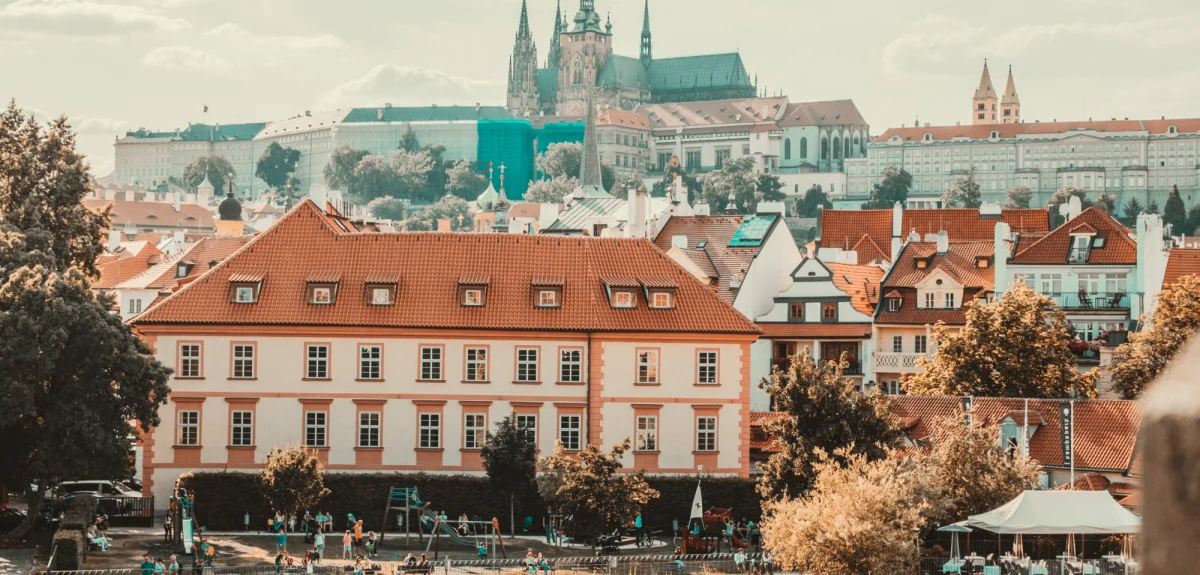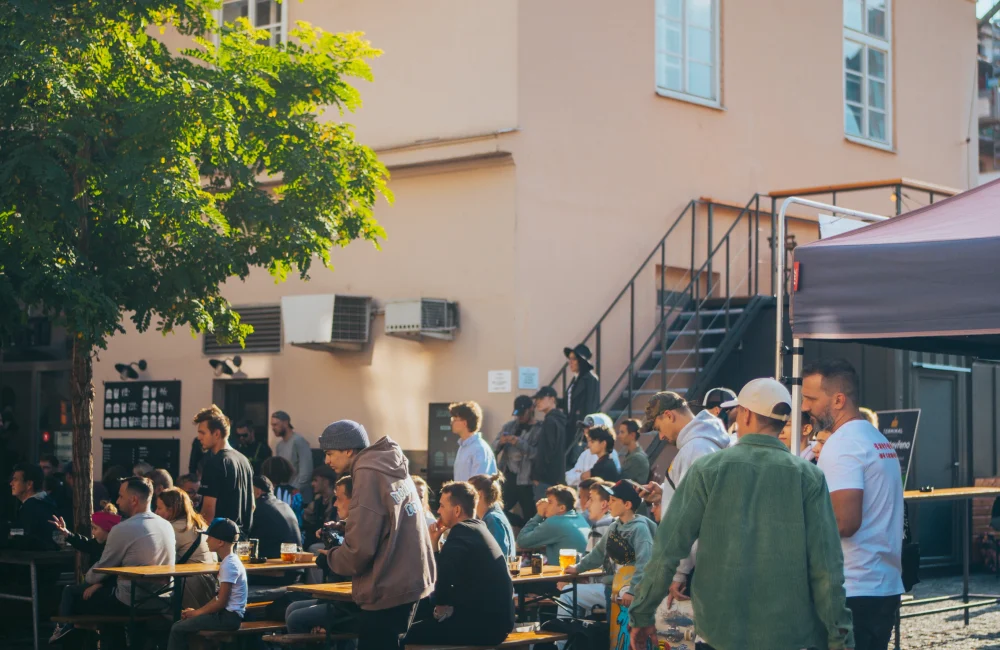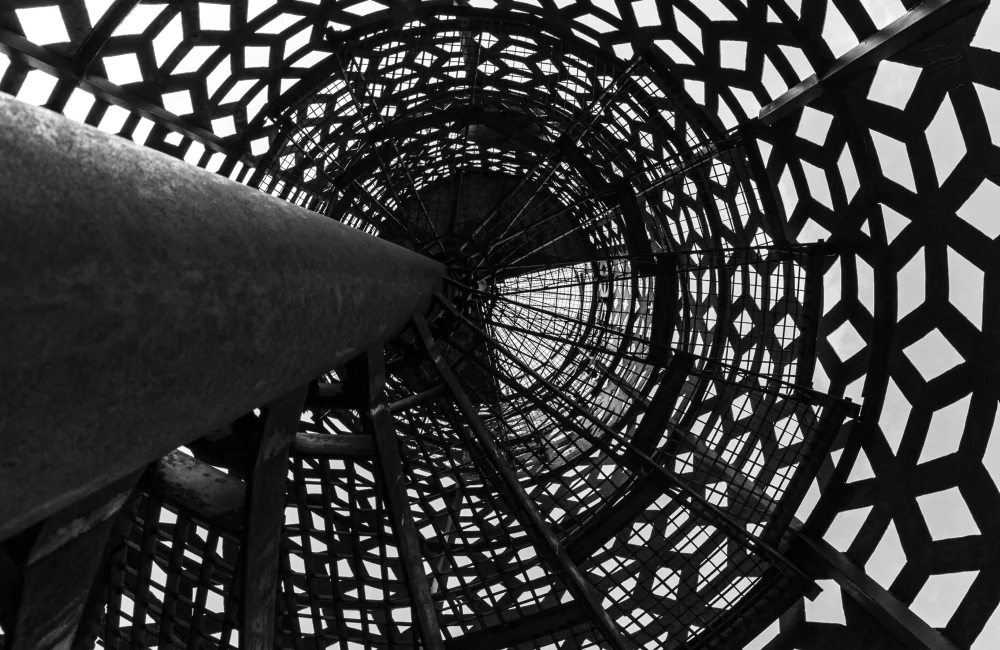
Karlín – the hippest neighborhood in Prague
Here’s why this Up-and-Coming neighborhood is worth spending a day in.
A residential and working neighborhood with no major historical sites that was badly damaged by the “100-year floods” of 2002, Karlín has little of the important architectural attractions that traditionally bring tourists to the Czech capital. But if you’re interested in seeing a part of Prague beyond old buildings, churches and castles, Karlín is a great place to spend your time, thanks to a slew of new growth that’s turned the area into one of the city’s most dynamic districts.
“It’s much less touristy and a bit more local-based,” says Michael Kubenk, the Czech-Canadian owner of Garage, Karlín’s beloved Canadian café. “It’s always reminded me of being kind of French – parisien, almost.”
Among the neighborhood’s more Gallic elements, says Kubenk, are its charismatic 19th century apartment buildings, constructed in the century following the neighborhood’s official foundation in 1817. In addition, Kubenk cites the soaring plane trees that were planted here a century or more ago, and the open, bike-friendly streets – which, being more modern, are generally wider than the narrow lanes of the old town. Luckily for its residents, Karlín also has beautiful, well-manicured parks at Karlínské Náměstí, the district’s main square, and at Invalidovna, the Baroque-era former home for military veterans that stands at its eastern border.
But it’s not just man-made constructions that give Karlín its unique atmosphere. Unlike most parts of Prague, Karlín is small – and clearly defined by natural geography. To the north is the Vltava river, to its south is the soaring Vítkov hill, which partially shadows the district, especially during the romantic autumn and winter months.
“Karlín is just sandwiched between the hill and the river,” says Kubenk. “And it’s only four streets wide.”
That topography creates a narrow strip of land that ends up feeling very intimate and inter-connected, as well as somewhat isolated – despite the fact that its main metro station, Křižíkova, lies just three stops from the central Můstek station at Wenceslas Square. A large highway at its western edge and the old railway viaduct nearby reinforce the sense of Karlín as standing apart from the more historic – and touristic – districts of the city center, allowing the area to develop its own charm.

But while the district has quietly become one of the city’s most attractive neighborhoods, it wasn’t always that way. Due to its proximity to the river, Karlín experienced some of the Czech capital’s worst flooding when the waters of the Vltava crested on 13 August 2002.
“The water was three meters high in some places,” says Tereza Štroblová, the wife of Michael Kubenk and a co-owner of Garage. “You can still see the signs on the walls.”
That flooding left many Karlín buildings severely damaged, and would-be buyers wary of moving into a flood zone. For years, while the rest of Prague experienced a real-estate boom, Karlín properties remained relatively cheap – a situation which naturally attracted creative types.
“It used to be really cheap, right after the floods, and you used to be able to get something really special,” says Matěj Velek, who runs Kasárna Karlín, a former military barracks which is now enjoying new life as multi-use creative space here. “One friend of mine is living here in something that I would call one of the best studios in the world. It’s really enormous, and it’s here in Karlín, just sort of hidden, and it’s beautiful. A lot of artistic people are living here.”
Those artistic types helped launch the original location of Karlín Studios, home to affordable artistic ateliers, and an attendant gallery. Subsequent growth, however, put pressure on many of the area’s older residents, and Karlín Studios was forced to leave its previous location and relocate into a smaller space inside Kasárna.

Today, Karlín is particularly noteworthy for its repurposed buildings, like the block-size Kasárna, originally built in 1848. The area’s main concert hall and events center, Forum Karlín, occupies a former steam-engine factory from 1908, while other old industrial buildings have been turned into offices for publishing and new-media companies. Still others have found new life as residential conversions.
“It was an old industrial neighborhood, there were a lot of industrial factories around here, and a lot of these buildings were where the workers lived and worked,” says Kubenk. “They were manufacturing big steel wheels and cogs for factories and engines, steam engines and stuff like that.”
As Karlín grows, the result is an occasionally shocking combination of the traditional and the trendy, with historic old pubs like U Tunelu competing with new-school attractions like Bob’s BBQ, an American-inspired barbecue joint which opened earlier this year.
In fact, new spots for food and drink are some of Karlín’s big draws, a development which only goes back a few years. The year 2015 witnessed the opening of a wave of widely hailed but generally inexpensive restaurants, including Garage, Nejen Bistro and Eska. Others have followed, including everything from ice-cream sandwich shops to cat cafés.
While Karlín continues to blossom, the area’s longstanding charm remains the same – or even improved. You can still enjoy the charismatic plasterwork of its grand, 19th century apartment buildings and you can still enjoy the great views from atop Vítkov Hill. Fortunately, the air quality has improved, thanks to Karlín’s expanding bike culture. You can still find a bowl of hearty goulash in a traditional pub, but you can also stop for estate-grown, locally roasted coffee.
But no matter how wonderful Karlín feels, you still probably won’t see many tourists.
“If there is something that Karlín is definitely not, it’s a touristic part of Prague,” says Velek.
Text by Evan Rail